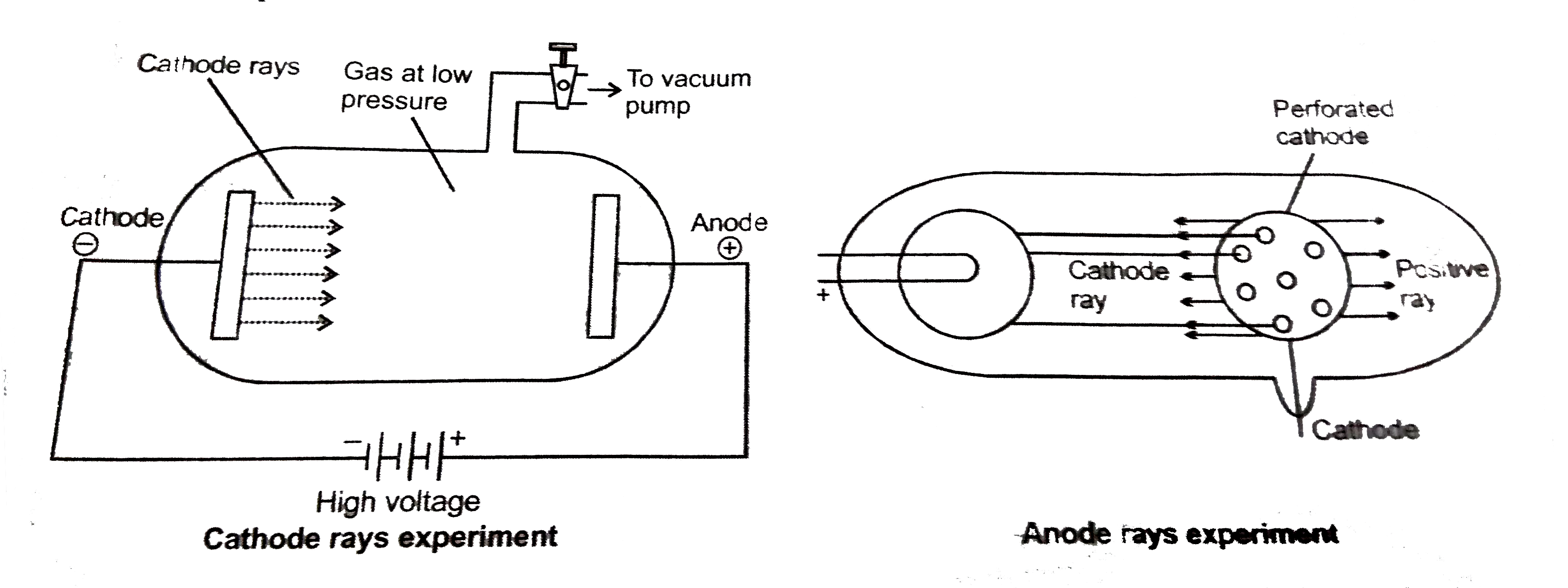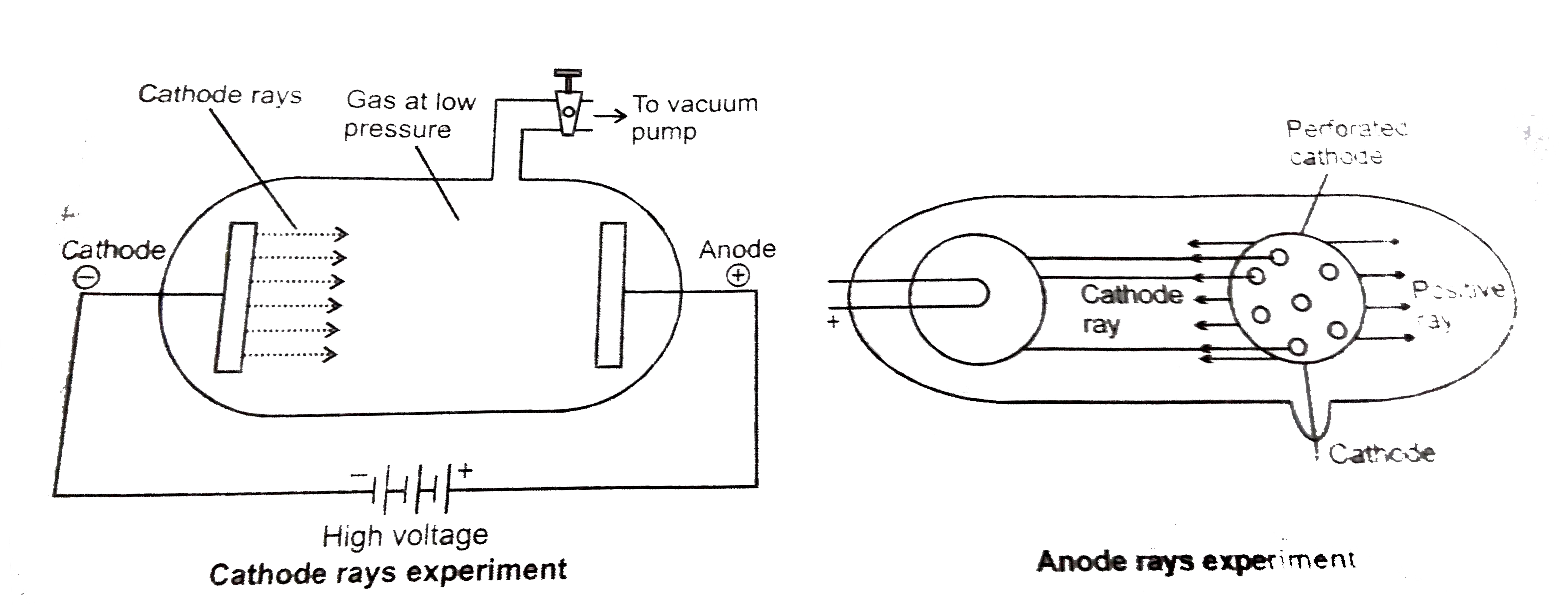Thomson's analysis of cathode ray experiment led him to conclude that electrons were fundamental particles.
e/m ratio for particles in cathode rays was found to be independent of the nature of the gas taken in the tube.
If both assertion and reason are true and the reason is the correct explanation of the assertion.
If both assertion and reason are true but reason is not the correct explanation of the assertion.
If assertion is true but reason is false
If assertion is false but reason is true.
The correct Answer is:A
(a) e/m ratio for particles in cathode rays comes out to be same for all gases.
e/m=1.76×1011C/kg
The led to the conclusion that electrons were fundamental particles.
Topper's Solved these Questions
- ATOMIC STRUCTUREBOOK - A2ZCHAPTER - ATOMIC STRUCTUREEXERCISE - AIPMT/NEET Questions
59 Videos
- ATOMIC STRUCTUREBOOK - A2ZCHAPTER - ATOMIC STRUCTUREEXERCISE - AIIMS Questions
16 Videos
- ATOMIC STRUCTUREBOOK - A2ZCHAPTER - ATOMIC STRUCTUREEXERCISE - Quantum Numbers, Orbitial'S Shape, Electronic Configuration
91 Videos
- CHEMICAL BONDING AND MOLECULAR STRUCTUREBOOK - A2ZCHAPTER - CHEMICAL BONDING AND MOLECULAR STRUCTUREEXERCISE - Section D - Chapter End Test
30 Videos
Similar Questions
Knowledge Check
The e/m ratio for cathode rays
Ais a constant value regardless of the nature of gas taken in the tubeBvaries as the atomic number of the element forming cathode in the discharge tube changesCvaries as atomic number of the gas in the tube variesDhas the smallest value when the discharge tube is filled with hydrogenJ.J. Thomson's cathode-ray tube experiment demonstrated that
Acathode rays are streams of negatively charged ionsBall the mass of an atom is essentially in the nucleusCthe e/m of electrons is much greater than the e/m of protonsDthe e/m ratio of the cathode ray particles changes when a different gas is placed in the discharge tubeJ. J. Thomson's cathode ray tube experiment demonst rated that
Acathode rays are streams of negatively charged ionsBall the mass of an atom is essentially in the nucleusCthe e/m of electrons is much greater than the e/m of protonDthe e/m ratio of the cathode ray particle changes when a different gas is placed in the discharge tube
The existence of negatively charged particle in an atom was shown by J.J. Thomson as a result of the studies of the passage of electricity through gases at extremely low pressure known as discharge tube experiments. When a high voltage of the order of 10,000 volts or more was impressed across the electrodes, some sort of invisible rays moved from the negative electrode to the positive electrode these rays are called as cathode rays.

Cathode rays travel in straight path in absence of electrical and magnetic field . Cathode rays consist of material part and charged particles? Cathode rays produce X-rays and light is emitted when they strike on ZnS screen. Cathode rays penetrate through thin sheets of aluminium and other metals . They affect the photogenic plate and passes heating effect when they strike on metal foil. The raito of charge to mass i.e charge/mass is same for all the cathode rays irrespective of the gas used in the tube.
The existence of positively charged particle in an atom was shown be E. Goldstein. He repeated the same discharge tube experiments by using a perforated cathode. It was observed that when a high potential difference was applied between the electrodes, not only cathode rays were produced but also a new type of rays were produced simultaneoulsy from anode moving towards cathode and passes through the holes or canal of the cathode. These termed as canal rays or anode rays.
These rays travel in straight lines and consists of positively charged particles. These rays have kinetic energy and produces heating effect also. The e/m ratio of these rays is smaller than that of electrons. Unlike cathode rays, their e/m value is dependent upon the nature of the gas taken in the tube. These rays produced flashes of light on ZnS screen and can pass throughs thin metal foils. They can produce physical and chemical changes and are capable to produce ionisation in gases.
For cathode rays the value of e/m:
View SolutionThe existence of negatively charged particle in an atom was shown by J.J. Thomson as a result of the studies of the passage of electricity through gases at extremely low pressure known as discharge tube experiments. When a high voltage of the order of 10,000 volts or more was impressed across the electrodes, some sort of invisible rays moved from the negative electrode to the positive electrode these rays are called as cathode rays.

Cathode rays travel in straight path in absence of electrical and magnetic field . Cathode rays consist of material part and charged particles? Cathode rays produce X-rays and light is emitted when they strike on ZnS screen. Cathode rays penetrate through thin sheets of aluminium and other metals . They affect the photogenic plate and passes heating effect when they strike on metal foil. The raito of charge to mass i.e charge/mass is same for all the cathode rays irrespective of the gas used in the tube.
The existence of positively charged particle in an atom was shown be E. Goldstein. He repeated the same discharge tube experiments by using a perforated cathode. It was observed that when a high potential difference was applied between the electrodes, not only cathode rays were produced but also a new type of rays were produced simultaneoulsy from anode moving towards cathode and passes through the holes or canal of the cathode. These termed as canal rays or anode rays.
These rays travel in straight lines and consists of positively charged particles. These rays have kinetic energy and produces heating effect also. The e/m ratio of these rays is smaller than that of electrons. Unlike cathode rays, their e/m value is dependent upon the nature of the gas taken in the tube. These rays produced flashes of light on ZnS screen and can pass throughs thin metal foils. They can produce physical and chemical changes and are capable to produce ionisation in gases.
Which is not true with respect to cathode rays?
View SolutionDescribe an experiment to show that cathode rays are made up of material particles.
View SolutionThe cathode ray particles originate in a discharge tube from the
View SolutionThe cathode ray particles originate in a discharge tube from the
View Solution
